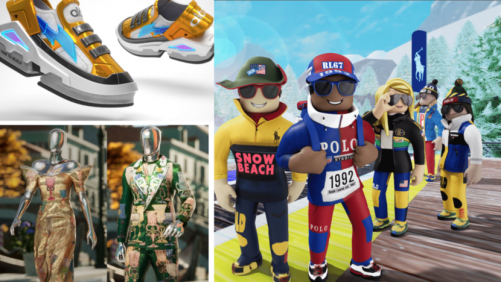How brands are using digital fashion in real life
Oct 10, 2022
From Gucci to Balenciaga, big fashion brands are making their way into the Metaverse.

While public interest in the Metaverse has not been completely lost, brands are trying to make the most of its popularity.
Many luxury brands have already jumped on the gamification bandwagon, selling branded skins and buying land in the Metaverse.
We have already visited Decentraland Fashion Week, played the Balenciaga game, and regularly watched digital collections move from the mass market to luxury markets.
In addition, in Web3, there is a serious beef between the Hermès brand and artist Mason Rothchild, the man behind the nonfungible token (NFT) MetaBirkins furry bags. This event has attracted public attention to the fact that Hermès uses the skin of exotic animals while the digital fur is just an image. MetaBirkin raises an important issue: “What do luxury lovers pay for?”
Hermès claims that MetaBirkin uses the brand for its own benefit. Their answer, effectively, it that it’s none of their business — artists draw whatever they want. It’s virtual creative content, not a physical product, and not even a fake at all. In other words, a digital bag cannot be the subject of a lawsuit.
In addition, if someone has a digital version of Birkin, they would probably like to buy a real bag by buying a token.
MetaBirkin does not undermine Hermès’ business in any way. Maybe it even attracts a new audience, making a product more hip and modern.
Anyway, this case is a wake-up call for luxury brands, indicating that it is necessary either to launch their digital fashion departments or cooperate with contemporary artists already online.

In order to pay fashionably, they need an appropriate wallet. Fendi will help. After all, they were the ones who presented their crypto wallets from the collaboration with Ledger at men’s Fashion Week. They look like little iconic Fendi Baguette bags but in Web3.
Now, brands are producing the same collections in digital and reality. For example, Zara didn’t miss the opportunity to raise brand awareness, so it dropped a digital version of its clothes. Despite their reasoning, who wants to go to the metaverse in Zara that has no difference from the real one. While it may be a rough start, there could be a better one in the future.
But, Dolce & Gabbana went further, adapting their real-time ideas to the Metaverse. First, it dressed up cats; secondly, the clothes sparkled and shimmered because in Metaverse, brands have to stand out, especially to customers who have enough money to buy a Dolce & Gabbana skin.
In general, digital fashion is still an instrument for the audience to capture, free from media traffic. Brands understand quite well, publish that you have something digital and that’s it — it will spread at the speed of light.
For example, Adidas has launched a personality-based AI-generated avatar creation platform: answer a few questions and choose sneakers. It’s the same advertising campaign: Everyone decides to make their avatars and post them on social networks; it’s the best marketing. Sure, each avatar looks the same, but that isn’t the point.
And, finally, all this digital fashion has moved to the catwalk.